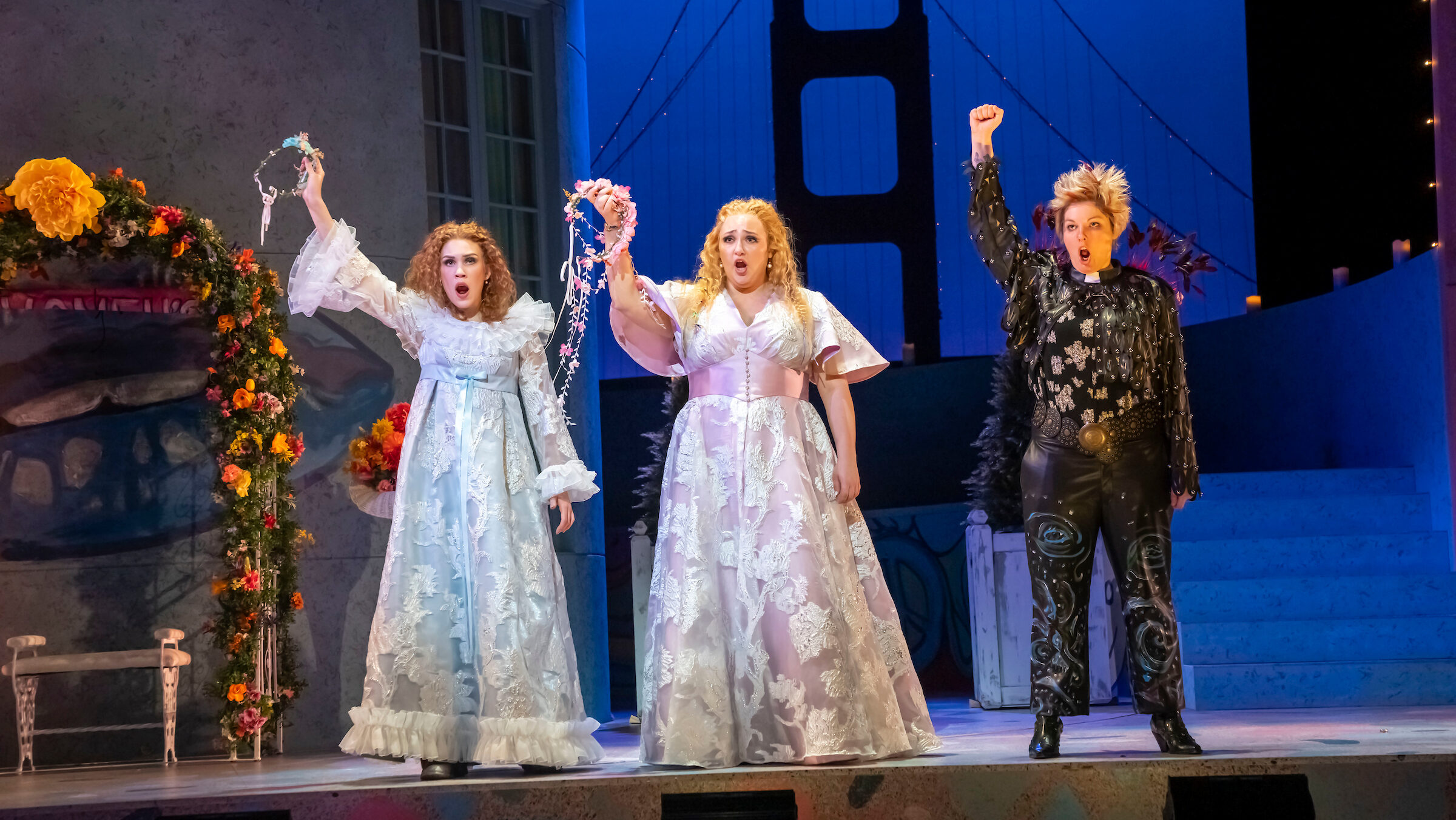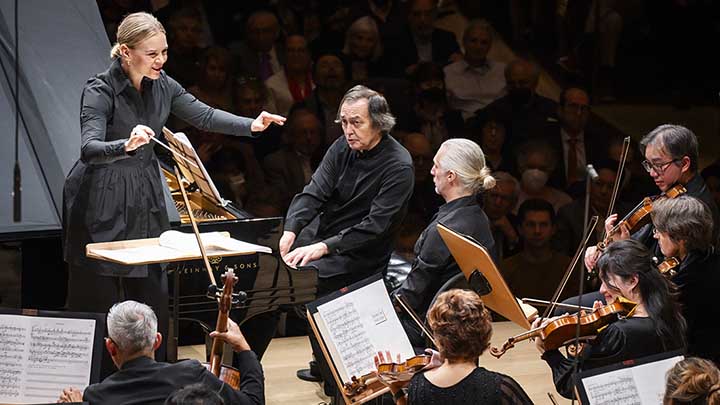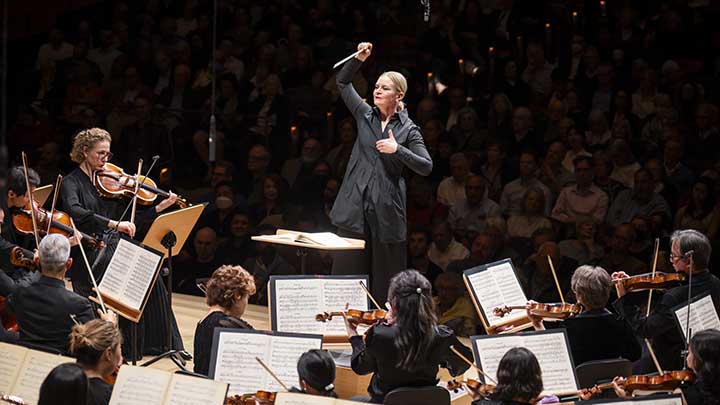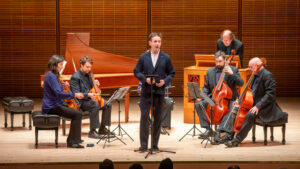
A name that seems to be on everyone’s short list in Susanna Mälkki, who served as the principal guest conductor in LA from 2016 through 2022. The Helsinki-born, Paris-based conductor demonstrates equal aptitude in contemporary classical music and with repertory staples, a desirable combination as more orchestras seek to widen the canon. And her manner on the podium, dynamic yet controlled, captures both intellectual rigor and a palpable joy in musicmaking.
All those qualities were on full display when Mälkki arrived in New York this past week to lead a fascinatingly varied program of works spanning more than a century and many stylistic contours. And with Dudamel all but absent from Lincoln Center this season, I left David Geffen Hall wondering if the Philharmonic’s brass had recruited the wrong leader from Los Angeles. In that regard, I can’t imagine I’m the only one.
The concert’s first half was devoted to music with ties to Hungary, anchored by a performance of György Ligeti’s Piano Concerto. Written and revised between 1985 and 1988, the five-movement work dives into multiple stimulating musical forms, blending the composer’s edgy sound world and evident love of jazz with a polyrhythmic structure influenced by traditional African music. Mälkki and soloist Pierre-Laurent Aimard dove into the first movement (Vivace molto ritmico e preciso) with perfect syncopation, the keyboard spanning solo line almost collapsing into pizzicato strings. The initial improvisatory feel became more structured as the section continued, but without losing a sense of mischievousness.
Ligeti orchestrated the Concerto for multiple offbeat instruments, with slide whistle, ocarina, and chromatic harmonica, and woodblocks all making an appearance. Mälkki highlighted the necessity of these unusual choices without ever making them seem arch. Likewise, Aimard showed himself adept at mirroring orchestral sounds and colors while still remaining penetrating and distinct. His duet with principal percussionist Christopher S. Lamb on xylophone was an eerie highpoint.
I had hoped that Aimard might select a Ligeti étude for an encore, but despite considerable coaxing from the audience, he declined. He can’t be blamed—even for a seasoned interpreter, the Concerto is finger-bruising work. But it also comes across with more immediacy and lyricism than “new” music often gets credit for being, and the performance augured well for the Philharmonic’s season-long celebration of Ligeti’s hundredth anniversary.
Mälkki preceded the Piano Concerto with a zesty performance of Bartók’s Romanian Folk Dances that emphasized the composer’s blend of scholarly investigation and impish humor. Principal piccolo Mindy Kaufman was especially spirited in the Pe Loc solo writing. As a curtain raiser, Jen? Lisztes performed his own solo transcription of Liszt’s Hungarian Rhapsody No. 2 for solo cimbalom, though the result was notable more for novelty than anything else.
The Ravel orchestration of Pictures at an Exhibition dominated the remainder of the concert, with Mälkki building a more cohesive, propulsive interpretation of the interconnected work than one usually hears. Each promenade section took on a different characteristic, from bright cheerfulness to dark foreboding, and the players sketched the art that inspired Mussorgsky with precise detail. The finale was grand and expansive, but not merely that—as with the rest of the suite, details emerged that sometimes seem smudgy in other readings. It was a lesson in approaching even the most familiar work with fresh eyes.
The performance on November 3 also featured an unexpected, poignant selection. Following intermission, Philharmonic president Gary Ginstling announced the death of Michael Pupello, a 39-year veteran of the orchestra’s stage crew. To honor their colleague, the musicians presented a conductor-less rendition of Variation IX (Nimrod) from Elgar’s Enigma Variations. Given the circumstances, it would be inappropriate to offer any critique beyond the acknowledgement that the Philharmonic’s playing was deeply felt.
The entire concert gave the impression of an outfit on top form, and it showed what an adept conductor can draw out of familiar and challenging works. Mälkki may not be ascending the podium full time in New York, but one can hope her visits will remain regular.
Photos: Chris Lee



























Comments